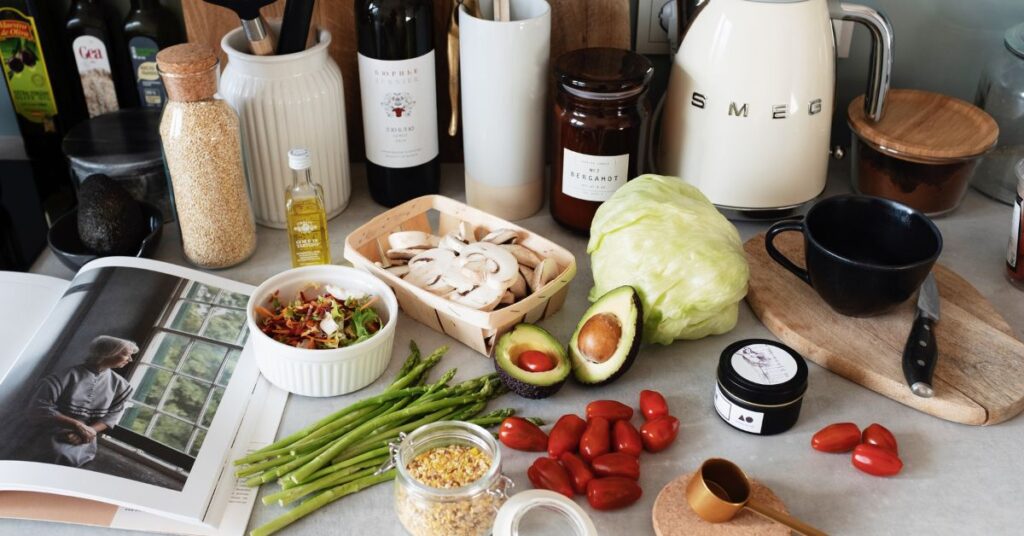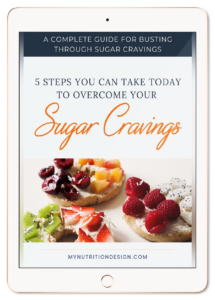Can You Weigh Less by Eating More? The Volumetrics Diet
Why do I lose weight when I eat MORE? It is actually possible to eat more and weigh less.
There are so many different fad diets out there, it can be hard to keep track. While they can vary in their recommendations and promises for weight loss, most of these diets focus on restriction rather than eating more food. The restriction can lead to hunger and overeating, which makes it difficult to sustain the diet and any associated weight loss over time.
The volumetrics diet is based on the simple principle that volume matters. It is a weight-loss plan that aims to reduce hunger, by choosing more nutrient dense foods that help fill you up without dishing up a lot of calories. The goal is to reduce your overall caloric intake while still feeling satisfied after meals. It encourages people to eat more fruits and vegetables, and limit processed and high-fat foods. Put simply, this diet tries to keep you full because, when given a choice, people will ultimately choose to eat more.
So what is the volumetrics diet? What are the benefits as well as the disadvantages? And is it the right eating pattern for you?
What is the Volumetrics Diet?
The volumetrics diet was created by Barbara Rolls, Ph.D., a professor, researcher, and director of the Laboratory for the Study of Human Ingestive Behavior at Penn State University. The principles are outlined in her book, The Ultimate Volumetrics diet: Smart, Simple, Science-Based Strategies for Losing Weight and Keeping It Off.
This diet is based on the idea that if you eat a larger volume of food with fewer calories, you will end up consuming less calories because you will feel fuller longer. Although not a strict diet, the volumetrics diet:
- Emphasizes staying away from higher versus lower calorie foods
- Focuses on what you can eat instead of what you can’t
- Doesn’t require counting calories or grams of macronutrients (like fat, carbohydrates or protein).
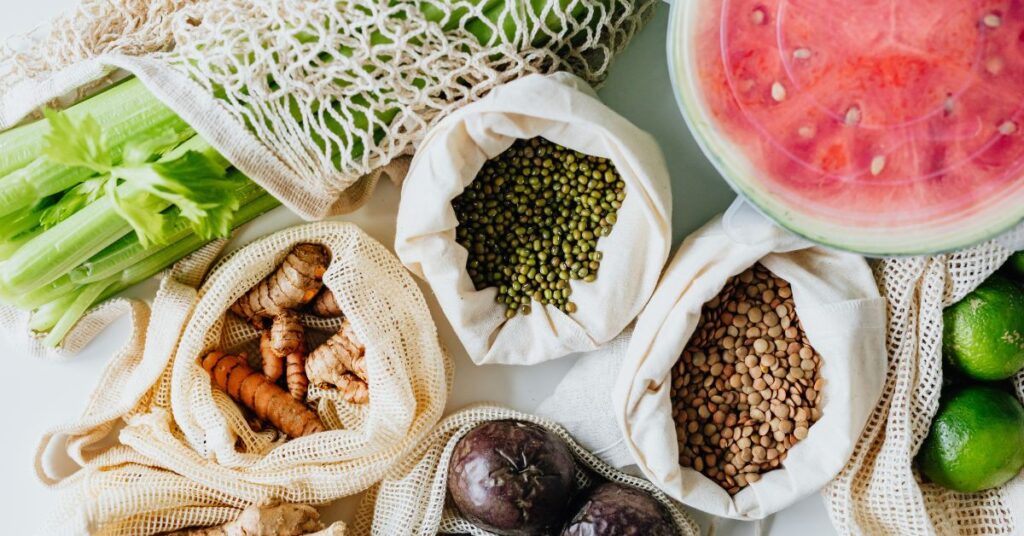
To follow this diet, it’s important to focus on your portions and be more mindful of your eating habits. It encourages people to choose lower calorie options when possible like lean proteins, whole grains, vegetables and fruits instead of foods that carry a caloric punch like fried or processed foods. It is encouraged to fill half your plate with non-starchy vegetables at meals since these foods are typically lower in calories but provide essential vitamins and minerals for good health.
It’s also important to pay attention to how much fat you eat since this can add up quickly in terms of calories consumed throughout the day. Although healthier fats from sources such as nuts, seeds, or avocados which contain beneficial nutrients are not disallowed on this plan, they are recommended in smaller portions because of their higher caloric value.
In addition to choosing more wholesome foods, it is important not to forget physical activity when following the volumetrics diet plan; exercise helps burn additional calories, so including regular physical activity into your routine can be helpful in achieving your goals faster. Finally, remember that small changes over time can lead to big results. Don’t get discouraged if progress isn’t immediate.
The volumetrics diet is a good option for weight loss because it’s more about eating than dieting. It focuses on eating certain foods more often than others. High-volume, low-calorie foods are encouraged to help promote healthy weight loss and improve health, so you really can say, “I lose weight when I eat more!” Now, let’s look at the benefits of this diet.
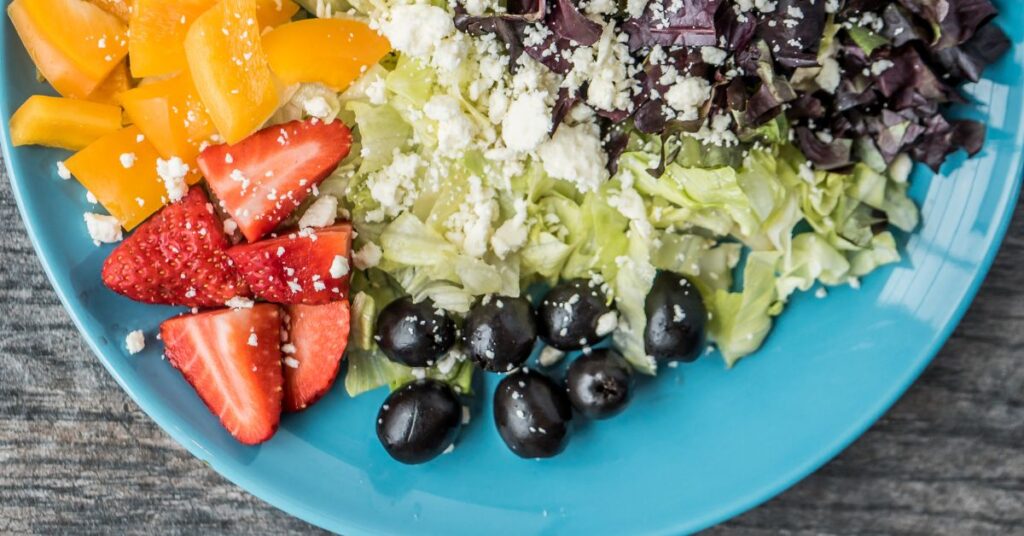
Benefits of the Volumetric Diet
Lose weight while eating more
One of the main advantages of the volumetrics diet is its ability to help people lose weight without sacrificing satisfaction or hunger levels. It encourages healthy foods that are low in calories and high in fiber (like fruits and vegetables) that include many beneficial vitamins and minerals. Although no food is banned, processed foods which are higher in calories, fat, sodium and sugar and offer up less essential nutrients, are discouraged. They also pack a ton of calories in a smaller volume which can lead to weight gain over time.
Reduce risk of chronic diseases
Another benefit of this diet plan is its potential for reducing your risk of chronic diseases such as heart disease and diabetes. Multiple studies have shown that following a plant-based diet can significantly reduce inflammation in the body which can lower your risk for developing certain conditions like cardiovascular disease or type 2 diabetes. Eating plenty of fiber-rich fruits and vegetables levels blood sugars in the body so you don’t experience sudden spikes or drops in energy levels due to poor food choices.
Ensure essential vitamins and minerals for overall health
Finally, following a volumetrics diet plan can help promote better overall health by providing essential vitamins and minerals your body needs. This includes calcium for strong bones; iron for oxygen transport; vitamins A & C for immunity; B vitamins (thiamin) for energy production; magnesium & potassium for nerve function as well as zinc & selenium for antioxidant support. These important nutrients are not only beneficial but necessary if we want our bodies to stay healthy long-term.
The volumetrics diet offers many benefits to those looking to improve their health through nutrition, including weight loss, increased energy levels, and improved overall well-being. Now that you know the benefits of this diet, let’s look at how to follow it.
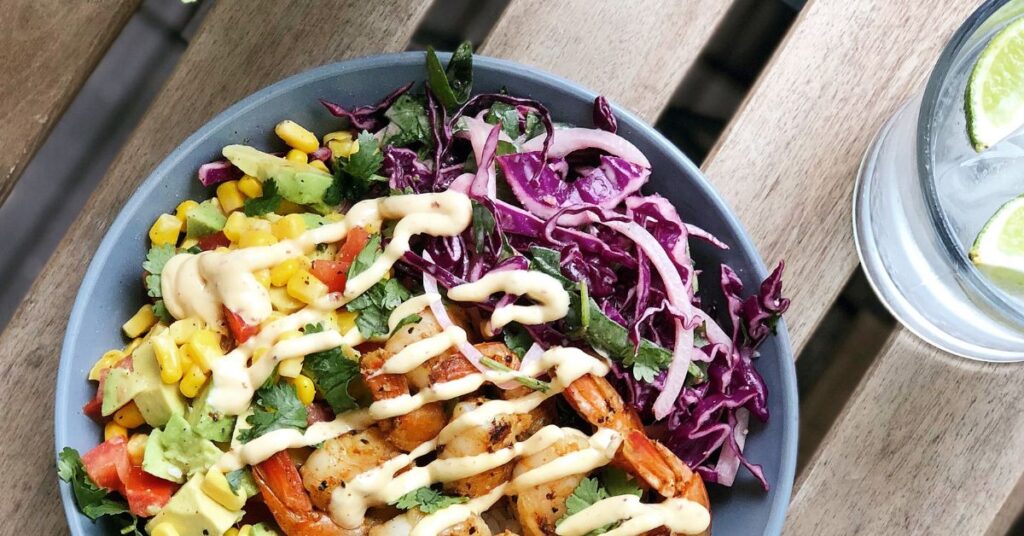
How Does Eating More Help with Weight Loss?
The volumetrics diet categorizes food into four groups based on their caloric density.
Volumetrics Diet Group One: Very Low Density
Foods in this group are the base of the volumetrics diet and contain high water content to help keep you full. They have a very low caloric density, so more of these foods are encouraged in your diet. Food items include:
- Fruits as such as oranges, bananas, berries and grapefruit
- Non-starchy vegetables, such as asparagus, broccoli and Brussels sprouts
- Broth-based soup
- Non-fat dairy products
- Beverages: water, black coffee and unsweetened tea
Volumetrics Diet Group Two: Low Density
Foods in group two have lower caloric density and can be enjoyed in moderation. Examples include:
- Whole grains like quinoa, farro, bulgur, barley and brown rice
- Lean proteins, such as skinless poultry, fish and lean cuts of beef or pork
- Legumes such as lentils, kidney beans and black beans
- Tofu
- Starchy vegetables, such as potatoes, corn and butternut squash
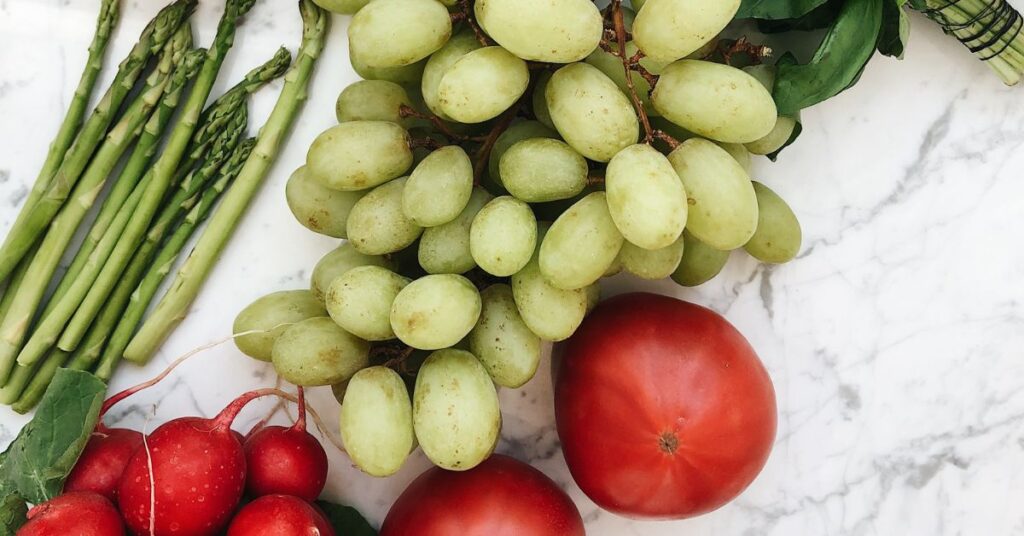
Volumetrics Diet Group Three: Medium Density
Foods in the third group contain medium caloric density and should be consumed in moderate amounts. It is important to keep an eye on serving sizes when eating these foods.
- Full-fat dairy products, including whole milk, cheese and ice cream
- Refined carbohydrates, such as white bread, baked goods and white rice
- Avocados
- Fattier cuts of meat and fish and poultry with the skin
- Salad dressing
Volumetrics Diet Group Four: High Density
Foods in this category are classified as higher-density foods. These foods contain a high number of calories per serving and should be eaten sparingly. These foods are typically processed, loaded with sugar, and higher in fat.
- Oils: butter, olive oil, vegetable oil, margarine and lard
- Seeds: chia seeds, hemp seeds, sesame seeds and flax seeds
- Nuts: almonds, walnuts, pecans, trail mix
- Processed foods: cookies, candies, chips, pretzels and fast food
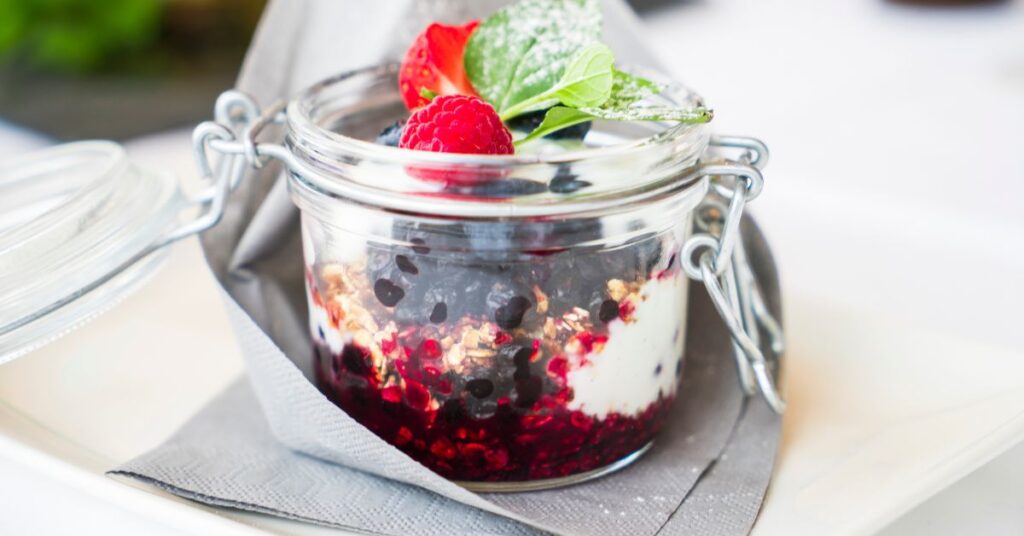
How to Use the Volumetrics Diet’s Food Groups
There is no specific formula, guideline, or amount of food from each group you need to consume. The idea is to track a few days of what you are eating (keeping a food journal can be helpful), and then look for places in your diet where you can swap higher energy (or calorie) foods with lower density foods. Small swaps over time can create a calorie deficit that can lead to better eating patterns and more sustainable weight loss. If your goal is to lose weight, you’ll focus on the first two categories, while incorporating some foods from categories three and four. Each day, you’ll eat breakfast, lunch, dinner, a couple of snacks (as needed), and dessert (if you feel you want to).
Focus on foods from Groups One and Two. It’s important to focus on filling your plate with mostly low-energy-density foods like fruits and vegetables. These nutrient-dense options provide vitamins and minerals without adding too many extra calories to your meal. Additionally, be sure to include some lean protein sources such as chicken or fish at each meal to help keep you feeling full throughout the day.
Be cognizant of portion sizes when eating foods from Groups Three and Four. When choosing higher energy density items like nuts or cheese, it’s important to pay attention to portion sizes so you don’t overdo it on the calories. For example, instead of having an entire bag of nuts as a snack, try having just one serving size (about 1 ounce) and pair it with a less calorie-dense option like fruit. By doing so, you moderate the portion of the higher-calorie item while still receiving its nutritional benefits. In this way you are not restricting any food, you are just being mindful of eating less of the higher calorie food by pairing it with a lower, higher fiber food item (like fruit).
Reduce high-fat and processed foods. Limiting processed and high-fat food choices when following this diet plan is also important. Processed foods not only contain added sugars but are often very high in saturated fat. This can not only lead to weight gain but can cause health issues if consumed regularly. Instead, opt for whole foods like fresh fruit or air-popped popcorn for snacks, especially if you are craving something crunchy.
This diet is all about balance, not restriction. Finally, remember that balance is key when following any type of dietary plan including the volumetrics diet. While focusing primarily on lower calorie-dense food choices is essential for managing your weight long-term, pairing these foods with a smaller quantity of higher calorie foods that are sustaining and non-processed is key.
Following the volumetrics diet can be a great way to improve your health and nutrition, but it is important to have an understanding of the principles behind it and to make sure you are following it correctly. In the next section, we’ll discuss the advantages and disadvantages of this diet.
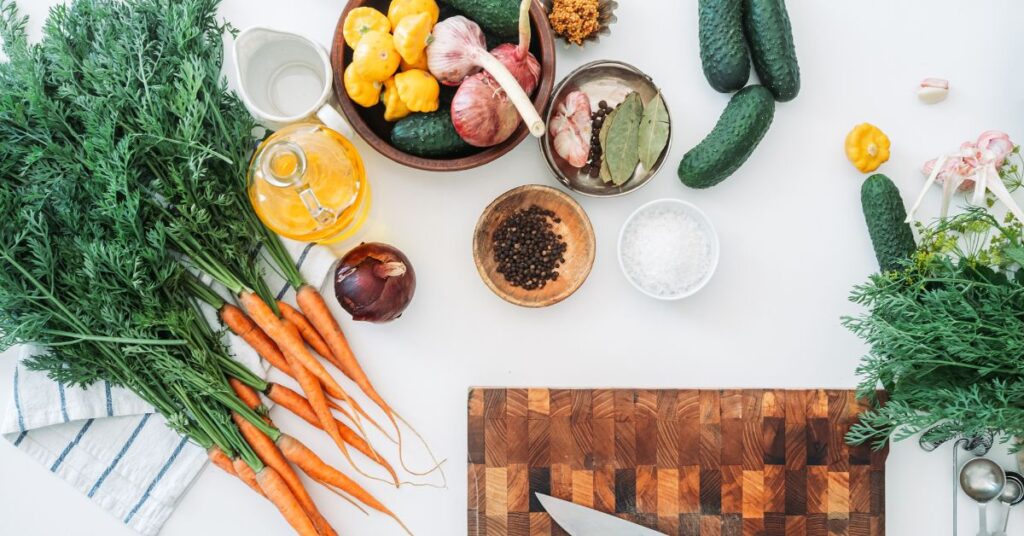
Advantages and Disadvantages of the Volumetrics Diet
Like any weight loss plan, there are both positive and negative aspects to consider if you are interested in following this diet. Here are some of the advantages and disadvantages of the volumetrics diet:
Advantages:
- Not restrictive. You don’t have to count calories or macros.
- Emphasizes lower-calorie density, nutrient-dense foods.
- The focus is on eating more, rather than eating less.
- A more flexible, sustainable plan.
- Helps make you more aware of food choices and eating habits.
- High in fiber, vitamins and minerals.
- May improve gut health by increasing nutrient-rich fruits and vegetables.
Disadvantages:
- Requires cooking most meals at home and can be a big time commitment.
- Limits fats, even heart-healthy fats like nuts, olive oil and avocados.
- It may be too calorie focused-calorie counting isn’t foolproof and not all calories are created equal (1 ounce of nuts and one ounce of chips are not nutritional equivalents).
- Eating out may be difficult without knowing exactly what is in the food you are being served.
- It can get boring: all that soup might eventually get dull. Adding new recipes to your plan is key.
- May not be structured enough for some people.
Despite the diet’s disadvantages, this plan has many benefits that make it an attractive option for those looking to improve their health status with nutrition and more flexibility in choices. Now, let’s look at how it is possible to make this dietary pattern work for you!

Tips for Success to Lose Weight while Eating More with the Volumetrics Diet Plan
1. Meal Prep
Meal prepping is a key component when following the volumetrics diet. Taking time to plan out your meals for the week ahead can help you stay on track and ensure that you have healthy options available when hunger strikes. Meal prepping saves time during busy weeks since your meals are prepared and ready to go. Start small. Pick 1-2 recipes you can make for the week and double the recipe for leftovers. Begin by making a grocery list with all of the ingredients needed for each meal throughout the week. Then, carve out some time over the weekend or on a less busy weekday, to prepare these meals in advance. Consider cooking up batches of grains like quinoa or brown rice, chopping vegetables for salads or stir-fries, and marinating proteins such as chicken breasts or fish fillets. You can add these to larger or single-serve containers depending on if the meal is ready to go or if you have components of a meal you need to put together that night.
Here is one of my favorite meal plan recipes that fits nicely into the volumetrics diet:
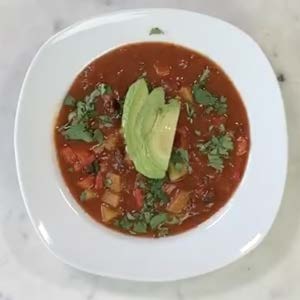
Vegetable Taco Soup
Servings: 6
Ingredients
- 1 Tbs olive oil
- 1 onion, chopped
- 3 cloves garlic, chopped
- 2 red bell peppers, chopped (green or yellow work too)
- 3 zucchini, chopped
- 3 carrots, peeled and chopped
- 2 Tbs ground cumin
- 2 tsp chili powder
- 1 (28 oz.) can crushed tomatoes
- 3 cup vegetable broth
- 1 (14.5 oz.) can black beans, rinsed and drained
- salt, to taste
- 1 lime, cut in wedges
- 1/4 cup fresh cilantro, chopped
- 1/2 avocado, diced
- hot sauce
Directions
Prep
- Chop onion, garlic, peppers, zucchinis and carrots.
- Drain black beans.
- Chop cilantro and dice avocado.
Make
- Sauté onions and garlic gently in olive oil until soft and fragrant.
- Add peppers, zucchini, carrots, cumin and chili powder to pot and continue to sauté over low heat until vegetables have softened, about 5 minutes.
- Add tomatoes and broth. Bring to a boil, then reduce heat and simmer for approximately 20-30 minutes.
- Stir in beans. Season with salt. Remove from heat and cover until ready to serve.
- Ladle soup into bowls and garnish with lime juice, cilantro, avocado and hot sauce.
Notes
You can replace the cumin and chili powder with 2 Tbsp. + 1 tsp. of a Taco Seasoning Blend.
2. Treat Yourself
It’s also important to remember that indulging once in a while is okay too. Treat yourself with moderation; think about having one or two pieces of dark chocolate after dinner rather than an entire bar or eating a slice of cake instead of two slices if dessert is calling your name.
3. Compliment Your Diet with Exercise
Incorporating physical activity into your daily routine is another key component of success while following this diet plan. Exercise not only helps promote weight loss but also boosts energy levels and improves your overall health. Don’t forget to include strength training to your routine. Building muscle helps burn calories at rest. Aim for 30 minutes per day most days of the week – this could be anything from walking or hiking to taking a yoga class online. If you’re short on time, break it up into 10-minute chunks throughout the day instead – every little bit counts and consistency is key.
4. Drink Lots of Water
Finally, don’t forget about staying hydrated. Drinking plenty of water throughout the day will help keep cravings at bay and will keep you energized enough to tackle anything that may be thrown your way – aim for 8 glasses per day minimum (or more depending on how active you are). Additionally, herbal teas, flavor-infused waters and spritzers are great alternatives if plain water isn’t cutting it; they provide flavor without adding calories from sugar so you can feel confident with these choices! Here is a recipe that I enjoy and is a great alternative to water to keep you hydrated throughout the day.

Herbed Blueberry Iced Tea
Servings: 2
Ingredients
- 1/4 cup blueberries, washed
- 8 mint leaves
- 2 cup ginger tea, brewed and cooled
- 1 cup ice
Directions
Prep
- Wash fruit and mint.
- Brew ginger tea.
Make
- Place berries and mint leaves in a glass and smash with a wooden spoon until chunky.
- Add ice to glass.
- Add tea and top with some sparkling water if desired.
Notes
Use any type of soft fruit as a base – blueberries, citrus flesh, etc. – and mix up the herbs and type of tea. Endless possibilities here! One of my favorites = strawberries + basil + lemon.

Is the Volumetrics Diet Right for You?
As with any diet, the key to success on the volumetrics diet is following the plan in good faith and adjusting it where necessary to fit your lifestyle.
Good faith means you will not always be following this diet to the letter. This means you may have more foods from Group 4 one day rather than Group 1 (and vice versa) and that’s okay, as long as you are aware of the portions and groups you are selecting from. Otherwise, you may not reap the benefits of this plan as intended.
Think about it as embracing the overall essence of this diet. Yes, nuts and fast food are in the same category, but we all know that a handful of almonds is a better choice than a handful of fast-food french fries. Unlike plans that include a peer-support system or group, you’re exclusively accountable to yourself on the volumetrics diet. This means you need to be honest with yourself and your choices.
While the freedom that comes with the volumetrics diet may tempt some people to try to manipulate the system, it also makes it adaptable to your needs, which in turn, makes it sustainable. Being mindful when eating is also key because it allows you to recognize when you are eating out of hunger or for other reasons. This too can aim the spotlight on food choices that are made when bored versus when hungry.

How do you adjust the Volumetrics diet to fit your goals and lifestyle?
Here are a few examples:
- Assume you are not trying to lose weight but are more interested in getting healthy. You could adjust the amounts of foods you eat per category, being conscious of including something from all four. You can also ignore calorie counting altogether by focusing more on nutrition.
- Let’s say you do want to lose weight, but calorie counting triggers unhealthy behaviors. Well, don’t do it! Try making a note of the number of foods you eat from each of the four categories instead, or make a healthy-eating checklist for yourself.
- Let’s say you can’t exercise for 30 minutes a day. Then do what you can! Ten minutes of stretching or taking the stairs instead of the elevator is 100% better than doing nothing. Set realistic and attainable goals that fit your current health, fitness level and lifestyle. Once you reach your original goal, you can set your sights higher and take it step by step to your next realistic and achievable goal.
Final Thoughts on Losing Weight but Eating More with the Volumetrics Diet
The volumetrics diet is a healthy eating plan that focuses on controlling hunger and promoting weight loss through the consumption of low-calorie, nutrient-dense foods. It encourages eating fruits, vegetables, whole grains, lean proteins, and low-fat dairy products while limiting processed foods and added sugars. Research shows that following this type of diet can help lower cholesterol levels, better control blood sugars and reduce the risk for certain chronic diseases.
Despite the multiple benefits of the volumetrics diet, it may be difficult for some people to follow since careful planning and preparation is needed in order to ensure adequate nutrition. Additionally, because this type of diet does not eliminate any particular food group or macronutrient (such as carbohydrates), it may be challenging for those who are used to following a specific dietary pattern, such as keto or paleo diets. Finally, if followed incorrectly or too strictly over an extended period of time it could lead to nutritional deficiencies which could negatively impact health status.
Although labeled “a diet”, the core principles of this healthy eating pattern can ultimately be taken and adjusted to suit your lifestyle needs without being restrictive. By following the diet’s principles, you can enjoy multiple health benefits such as improved energy levels, better digestion, weight loss, and overall improved well-being. Mindfulness around food choices within the various food groups is important. With some effort and consistency, you can start seeing results over time while still enjoying delicious meals that will leave you feeling satisfied and happy. “I lose weight when I eat more” can become your reality.

